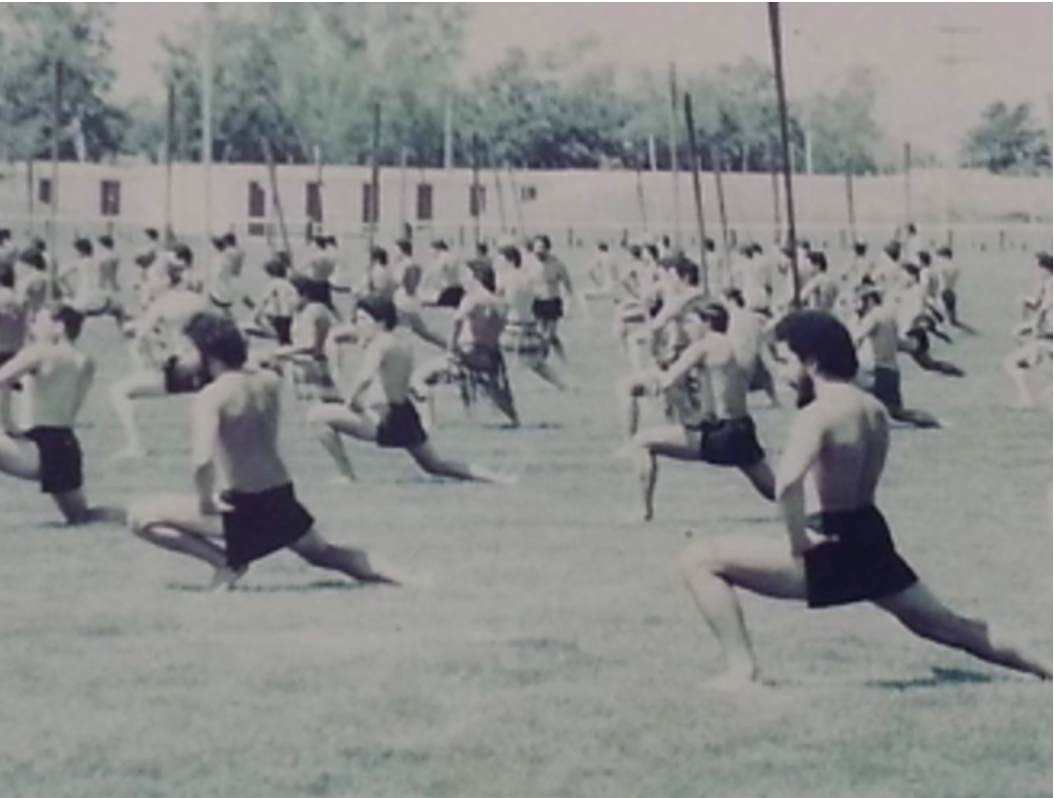Te Whare Tū Taua: The ancient art of Māori weaponry
From left to right, Tehaka, Thung, Rā and Dom practicing Te Whare Tū Taua.
As books come to a close, our laptops begin to crash and burnout looms, a group of UC students, Kaiako and community members work towards an event in which their mental, physical and spiritual state is put to the test.
Using Māori weaponry named rāukau whawhai, Dom, Tehaka, Thung and Rā have taken up the traditional practice of Māori weaponry: Te Whare Tū Taua.
Te Whare Tū Taua practices the art of ancient Maori Weaponary, exercising the physical demands relating to health and fitness. I spoke to a few kind UC students who were happy to use their training time to chin wag about their Tū Taua journey.
Image from Te Whare Tū Taua O Aotearoa website 2023.
The mahi involves using the rāukau to perform specific movements proceeding a Māori command. They move their legs, their blocking and striking movements also using the weaponry to spar.
Their grading system is established through different Pou/levels, with Poutahi as the first level through to Pouwaru as the 8th level. The group explains how the grading is not linear, but rather circular.
“It’s not like I'm up here, I’m better than you! It's more like I'm up here and I'm gonna bring you up here,” said Dom.
The group is completing their Poutahi grading in September, where they will all pass or fail together. Comprising of an overnight stay at a marae, they’ll be fed on the Friday evening, then train until midnight, with a 5am wake up the next morning.
Image from Te Whare Tū Taua O Aotearoa website 2023.
Diving straight into the mahi, they’ll repeat combinations of movements in unison with additional sparring for 5-7 hours.
The beauty of Tū Taua is the connection built between their rākau whawhai and themselves. Built and chosen by their own hands, their rākau can be made of tree, stick, timber, wood, spar, mast, plant, or even plastic tubing from Bunnings.
If they complete their Poutahi, they will receive a tipare (headband), that they will have to make/sew themselves as part of the grading process.
Their introduction to Te Whare Tū Taua differed amongst the group, with a couple being introduced through members of Te Akatoki and senior Māori lecturers, whereas Tehaka came in a different way.
Tehaka (front left) and Rā (front right) sparring at their training.
Whilst living on the road in a caravan for a couple years, he met a brother in Nelson who showed him fire spinning. Purchasing a $15 broomstick, he just started spinning it. Initially he thought it could just be something fun to show off to his daughters, but after 6 months of spinning, he found himself a taiaha teacher - a matua named Kevin.
“So, I met him on the beach. He showed me some mahi. And he invited me to Te Whare Tū Taua, which gave my spinning of purpose,” said Tehaka.
With ambitions to obviously complete their Poutahi grading, the group all have hopes to continue Te Whare Tū Taua due to enjoying the journey and understanding the full experience as far as they can go.
Dom reiterates the how powerful his journey has been being Māori, “I would definitely recommend it, especially for other Māori as it's definitely lifted my hauora.”
“It’s kind of like fighting the war inside yourself, trying to battle the everyday kind of challenges that you face problems, colonization, a lot of things that just come with being Māori,” said Rā.
“The discipline and the patience, the whakapono the bonds that we carry that help to basically navigate this life as like people and Māori.”
As for their own personal plug, Rā said, “there's always room for students, whatever experience you've had. And there's nothing you have to pay for it.”
“The only thing that they ask you pay for is your time and your focus. And that Yeah, I think that is a cool whakairo.”
They train at 10am Saturday mornings at Te Pā o Rākaihautū, inserting their own individual trainings when necessary in the lead up to their grading. It is highly commendable the time and mahi applied by this group, and the door is open for those willing to take on the challenge and connect with a rich world of a fascinating Māori art.




